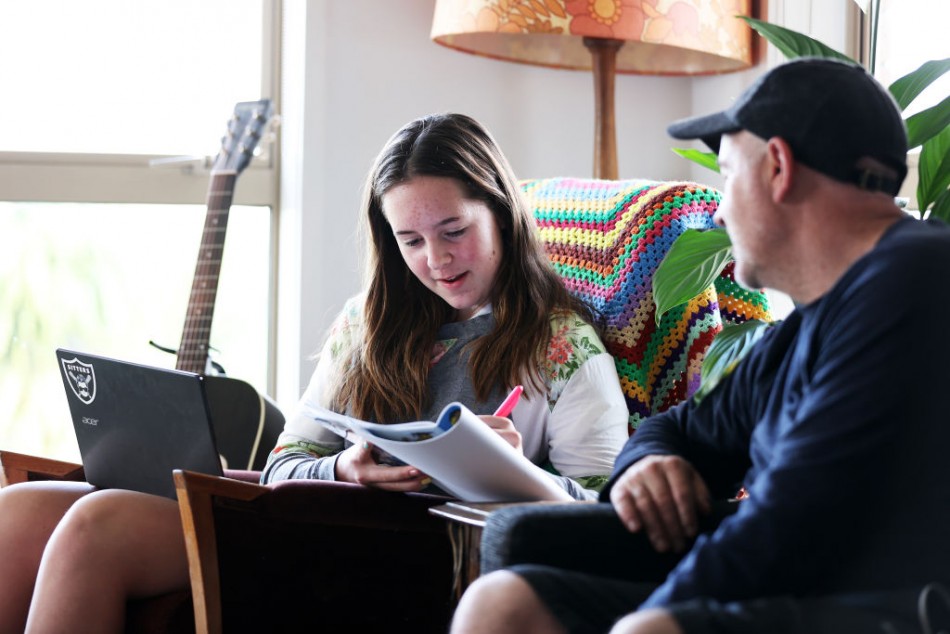Smooth Transitions: Co-Parenting Strategies for Divorced Parents

Divorce is often accompanied by a whirlwind of emotions and changes that can be hard for anyone to navigate. Amid the legal discussions and emotional adjustments, children are often caught in the crossfire, unsure of what their new "normal" will look like. It's a situation that calls for smooth transitions, particularly in the realm of co-parenting.
This article aims to provide co-parenting strategies that can help divorced parents create a healthy environment for their children.
Co-Parenting Strategies for Smooth Transitions
The Importance of Smooth Transitions
The process of moving from a single, unified household to separate households is often fraught with challenges. For children, the shift can be especially jarring. That's why the concept of "smooth transitions" is so critical. Ensuring smooth transitions between homes, routines, and parenting styles is key to mitigating stress and maintaining a semblance of normalcy for your children. Divorced parents often find that their children are more resilient and better adjusted when they experience less turbulence during this transition period.
Start with Communication: The Foundation of Effective Co-Parenting
Co-parenting begins with open, honest communication between the divorced parents. This is easier said than done, of course, especially if the divorce was not amicable. However, your focus should be on what's best for the child. Discuss openly the strategies you both wish to employ in raising your child, and try to find common ground. Software tools designed specifically for co-parenting can help keep both parties on the same page, facilitating smooth transitions between households and routines.
Strategies for Managing Time and Space
One of the first strategies that divorced parents should consider is how to manage the division of time and space. This often starts with a legal custody agreement, but the day-to-day reality requires more finesse and understanding. The goal is to create smooth transitions between homes. Consider a shared calendar that tracks the child's activities, doctor's appointments, and school obligations. Knowing what to expect, and when, can make it much easier for a child to adjust to new routines.
Harmonizing House Rules: Consistency is Key
Children crave consistency. A disjointed set of house rules between two homes can be confusing and anxiety-inducing. One of the most effective co-parenting strategies for creating smooth transitions is harmonizing house rules as much as possible. This doesn't mean you have to agree on every little thing, but major rules and consequences should be consistent between homes.
Read Also: Smart Parenting Solutions: Top 5 Best GPS Trackers for Kids in 2023
The Importance of Flexibility in Co-Parenting Strategies
While consistency is vital, so is flexibility. Life is full of unexpected twists and turns, and as divorced parents, being able to adapt your co-parenting strategies can make for much smoother transitions during such times. Whether it's a change in work schedules, a family emergency, or even a global pandemic, being flexible in your arrangements can go a long way toward reducing stress for everyone involved.
The Role of Extended Family and Friends
Divorced parents often overlook the role that extended family and friends can play in making co-parenting successful. Grandparents, aunts, uncles, and close family friends can provide additional emotional support and help with smooth transitions between homes. They can also serve as neutral parties to help mediate discussions or disagreements about co-parenting strategies.
Keeping the Child's Perspective in Mind
In all of these strategies for smooth transitions in co-parenting, it's crucial to remember the perspective of the child. As divorced parents, you have your own emotional baggage and logistical challenges to deal with, but it's imperative to keep the well-being of your child at the forefront of any decisions. Whether it's making sure to attend school events together, taking turns at doctor's appointments, or simply listening when your child expresses feelings about the divorce, keeping their needs in focus is crucial for successful co-parenting.
In conclusion, divorce is not easy for anyone involved, but for the sake of the children, it's important to work towards smooth transitions in every aspect of the new family dynamic. Utilizing effective co-parenting strategies can significantly ease the stress of divorce for children.
As divorced parents, putting aside your differences to communicate openly, harmonize house rules, and maintain a level of flexibility can make all the difference in your child's well-being. Remember, the goal is not merely to 'cope' but to thrive in this new chapter of your family's life.
Related Article: Parents Use Respectful Parenting as Approach to Produce Highly Successful Kids
© 2024 ParentHerald.com All rights reserved. Do not reproduce without permission.
